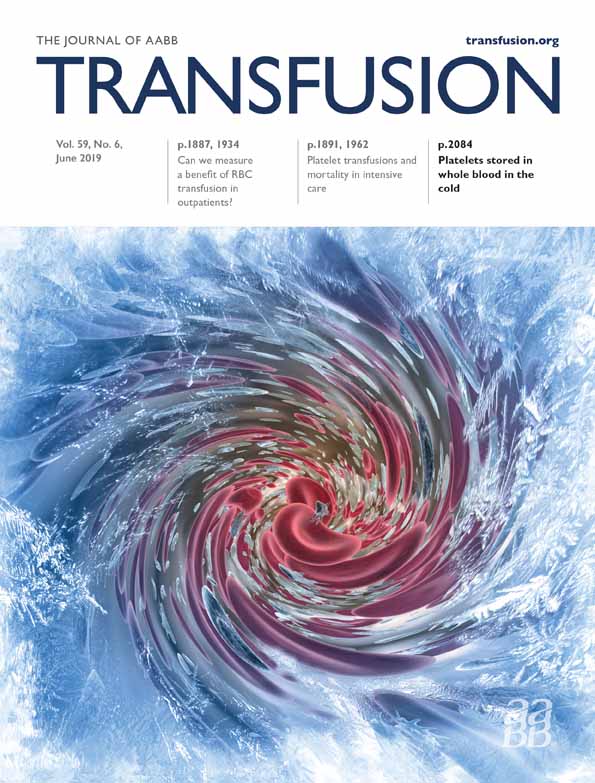Platelets stored in whole blood at 4°C: in vivo posttransfusion platelet recoveries and survivals and in vitro hemostatic function
Funding for this research study was provided under Grant W81XWH-12-1-0441 from the U.S. Army Medical Research and Materiel Command, Fort Detrick, MD.
The views expressed in this article are those of the authors and do not reflect the official policy or position of the U.S. Army Medical Department, Department of the Army, DoD, or the U.S. Government.
Abstract
BACKGROUND
Ordinarily, whole blood (WB) is separated into components before storage. We assessed the posttransfusion viability and function of platelets (PLTs) if they were stored within WB at 4°C.
STUDY DESIGN AND METHODS
Whole blood was obtained from 30 normal subjects and stored at 4°C without agitation for 12 days and for 10, 15, or 22 days with agitation. After WB storage, a PLT concentrate was prepared, and a fresh PLT sample was obtained from each donor. The stored PLTs were labeled with 111In and the fresh with 51Cr, and both were simultaneously transfused into their donor. Blood samples were obtained after transfusion to determine PLT recoveries and survivals. PLT samples from WB before and after storage were also assayed for PLT function and biochemistry.
RESULTS
After storage for 12 days without WB rotation, poststorage PLT counts averaged only 49 ± 12% of baseline values. After storage for 10, 15, or 22 days with end-over-end WB rotation, PLT counts averaged 76 ± 14% of baseline values. Fifteen-day poststorage radiolabeled PLT recoveries averaged 27 ± 11% (49 ± 16% of fresh), and survivals averaged 1.2 ± 0.4 days (16 ± 6% of fresh). in vitro assays demonstrated marked PLT activation after any storage time, and although PLT function decreased over time, stored PLTs were still considered acceptable.
CONCLUSION
These data suggest that, during rotated WB storage at 4°C for up to 15 days, PLT yields, poststorage PLT recoveries and survivals, and PLT function should be sufficient to support the short-term hemostatic needs of traumatized patients.
CONFLICT OF INTEREST
The authors have disclosed no conflicts of interest.




